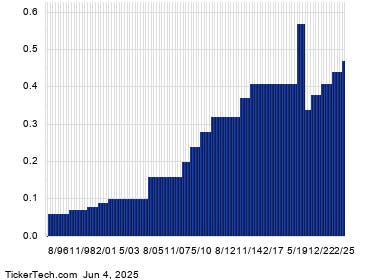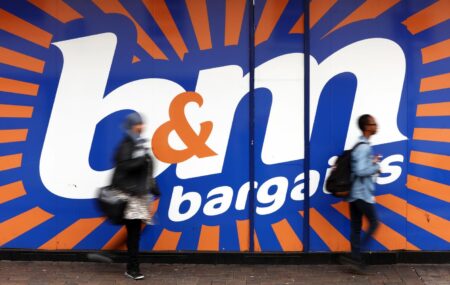We’ve got a rare “delayed reaction” income play on our hands right now. Thanks to the April stock-market plunge, we can now pick up 12%+ dividends at attractive discounts. But I don’t expect this cheap CEF opportunity to last very long.
I know early April feels like a while ago, but it created our opportunity, and the chance to buy is still available today. It lies in closed-end funds (CEFs). (I’ll show you three that pay those outsized 12%+ yields in just a second.)
In a nutshell, these three funds trade at discounts to their portfolio values—known as “net asset value,” or NAV, in CEF-speak. And many of those discounts still haven’t recovered from the April “tariff terror.”
When we buy a CEF at, say, a 10% discount to NAV, we’re essentially paying 90 cents on the dollar. As that gap narrows, we essentially profit twice: once from the fund’s high yield and again from the closing discount.
Here’s the important part: These discounts are on the road to recovery. And their “discount momentum” positions us for gains, in addition to these three funds’ double-digit payouts. You simply won’t find such a profitable situation in the S&P 500.
While the benchmark index has clawed its way back to around breakeven for 2025, the three funds we’ll get into next are still lagging, and that’s a gift for income investors like us. Let’s get into them.
Cheap CEF #1: Still-Overlooked Floating-Rate Loans Give This 12.5% Payer More Upside
Our first fund is the Nuveen Floating Rate Income Fund (JFR), with a 12.5% yield and a still-cheap valuation that’s unlikely to stay that way for long.
As you can see above, JFR’s discount plunged to within a hair of 12% when President Trump’s tariffs were unveiled. That deal has since been cut nearly in half, to 6.7%.
That might make you think it’s too late to buy. Not at all—JFR’s discount hasn’t fully snapped back to where it was at the start of the year, so there’s still upside here. And the discount will likely fade, because JFR has had a great run.
With a 31% total return in the last three years, JFR is bound to attract more investor attention, putting those who front run that crowd now in a strong position to gain.
JFR mainly invests in senior loans, as well as corporate bonds that are below investment grade, with a focus on floating-rate credit. You do need skilled management to navigate these waters, but Chicago-based Nuveen, which traces its roots back to 1898, is among the best in the business. Moreover, senior loans are repaid ahead of all other obligations in the event of a bankruptcy, which helps offset their risk.
But that’s not really an issue now, since corporate defaults are below their long-term average, despite the heavy markdown corporate bonds suffered in 2022, when investors thought they would see huge defaults. Since floating-rate loans (whose rates, as the name says, are linked to interest rates) still haven’t fully recovered from that selloff, they’re particularly compelling now, while default rates remain low.
In all, JFR gives us a well-designed bond portfolio to diversify our holdings. The income and discount make the deal even sweeter.
Cheap CEF #2: Blue Chip Stocks, High-Yield Bonds Fuel This 13.6% Payer
For something a bit more familiar, consider another Nuveen CEF: the Nuveen Multi-Asset Income Fund (NMAI).
NMAI mixes investments in well-known stocks, like Microsoft (MSFT), JPMorgan Chase & Co. (JPM) and Apple (AAPL), with loans and bonds, resulting in a well-diversified portfolio that helps management cover the fund’s 13.6% dividend.
Again, this diversification has been attracting investors, causing NMAI’s discount to dwindle. But we’re still getting a generous 9% markdown here.
Investors who buy NMAI’s diversified portfolio get a big yield at a hefty markdown to the fund’s actual value; this is partly why the fund’s discount has been disappearing. This narrowing of the discount will likely continue, and good economic news could accelerate it, as we saw happen in June 2024 (the peak in the chart above).
Cheap CEF #3: A Rare Pure-Stock Fund Paying 12.7% (at a 10% Discount)
Let’s wrap with a “pure” stock fund packing a powerful 12.8% dividend: the abrdn Total Dynamic Dividend Fund (AOD). Like the two CEFs above, AOD is attracting more investment, which we can see happening in real time through its shrinking discount:
Still, AOD trades for far less than NAV, with a 9.7% discount that makes little sense given the fund’s huge yield and large cap holdings, like Microsoft, Apple, Alphabet (GOOGL) and Tencent Holdings (TNCT). It also makes little sense for an investor to be able to get these stocks at such a big discount, which explains why that deal has been eroding.
The bottom line here is that these 12%+ yielders are still catching up in the wake of April’s panic, making them worth a look for those with extra cash to put to work. But their shrinking discounts show the crowd is catching on, so you’ll need to act fast.
Michael Foster is the Lead Research Analyst for Contrarian Outlook. For more great income ideas, click here for our latest report “Indestructible Income: 5 Bargain Funds with Steady 8.6% Dividends.”
Disclosure: none
Read the full article here
















